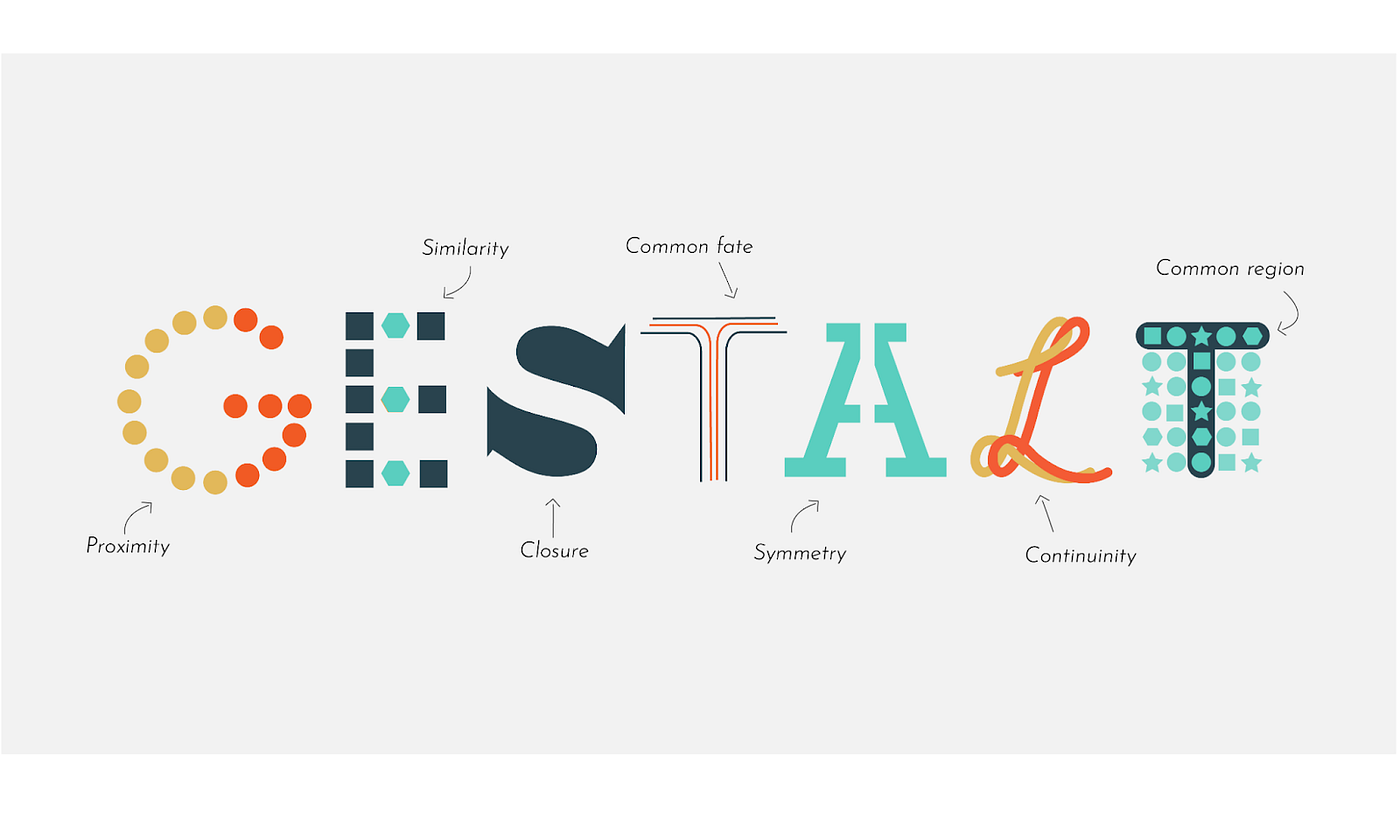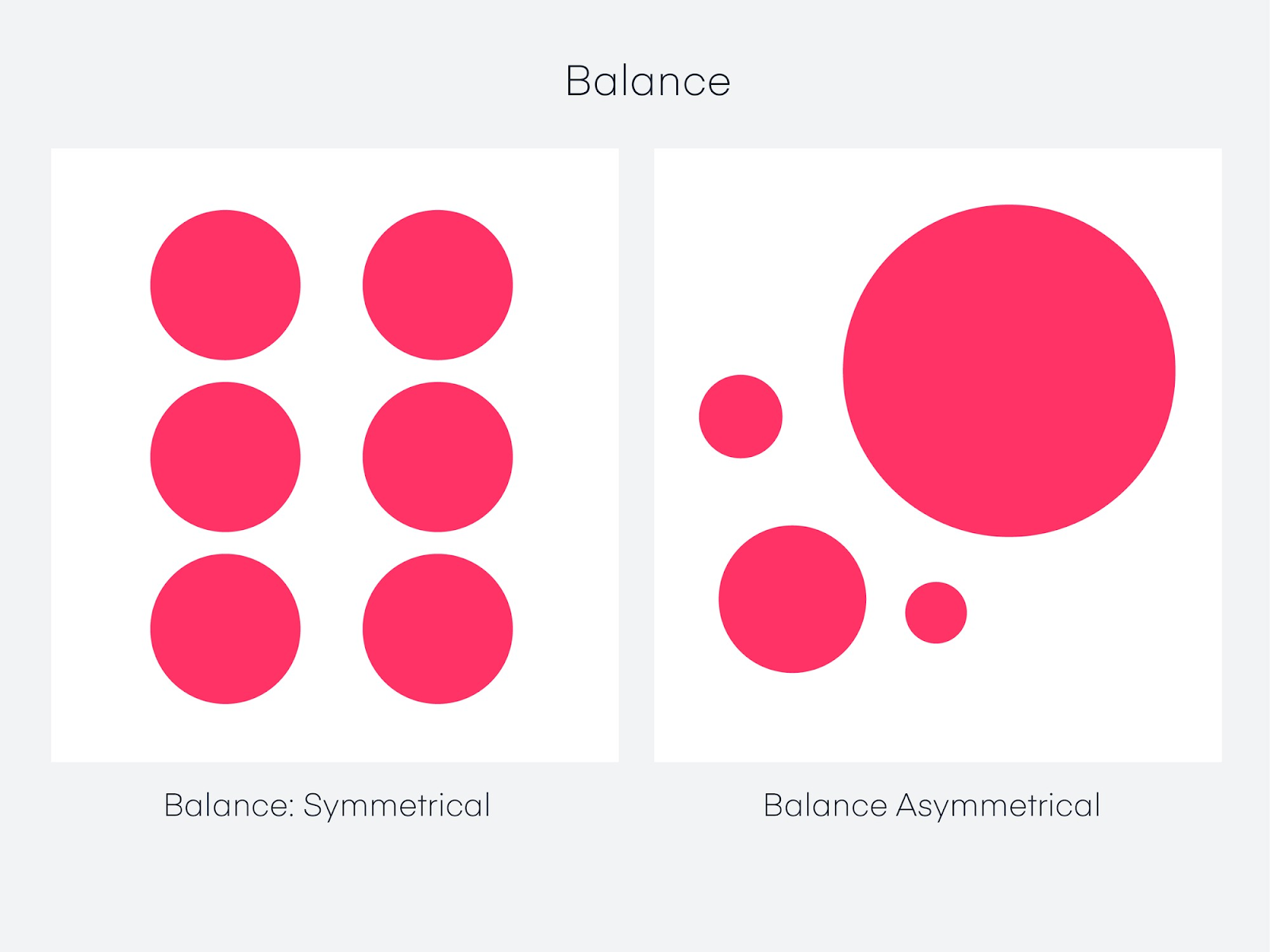1. This is the Module Information Booklet for this module:
FIG 1.0 Design Principle Module Information Booklet
2. These are the design principles that are taught in this module:
Gestalt Principles are principles of human vision that explain how we perceive objects—grouping similar parts together, identifying patterns, and decomposing complicated pictures into simpler forms. The principles are used by designers to arrange material on webpages and other interfaces in a way that is both visually beautiful and simple to comprehend.
FIG 1.1 Example Of Gestalt Theory In Design Principles
Generating contrast entails deciding what you want the audience to see initially. Containment draws attention to a certain region. Technically speaking, it's the identifiable variation in the parts of the design.
FIG 1.2 Example Of Contrast In Design Principle
Size, weight, location, colour, form, and style can all be used to generate emphasis. Emphasis also known as dominance, may not always be the same as contrast, despite their apparent similarities. An audience's attention is captured when a focal point is created by adding emphasis to an object. Although it doesn't overshadow the rest of the design, it is where you want the reader to focus initially.
FIG 1.3 Example Of Emphasis In Design Principle
Balance is one of the key principles of design, balance describes how visual elements are arranged so that their visual weight complements that of the other elements in the design and the composition appears to have the elements distributed appropriately.
FIG 1.4 Example Of Balance In Design Principle
Repetition means reusing elements -- colours, patterns, fonts, images, textures and more throughout a piece of work. Another way of thinking about repetition is consistency.
FIG 1.5 Example Of Repetition In Design Principle
The way the eyes move across a design is referred to as movement. The most crucial component needs to influence the next most crucial one, and so on. This is achieved by placement, with the eye naturally gravitating toward particular parts of a design initially.
FIG 1.6 Example Of Movement In Design Principle
When the components of a room come together to create a balanced, harmonious final design, this is known as unity in design. Without harmony, unity is hard to create. The use of specific design components, such as colour, form, texture, etc., achieves harmony.
FIG 1.7 Example Of Harmony & Unity In Design Principle
Symbols are communications that have specific meanings. usually visual, symbols act as communication short-cuts that convey one or more messages that have been previously learned by both the sender and the recipient.
FIG 1.8 Example Of Symbol In Design Principle
The relation between words and images is an important element of design. Words and images may correspond to match with one another. The picture below shows an introductory language exercise book. In a painting, the title can describe the image, while the image illustrates the title. The image illustrates the words.
fig 1.9 Example Of Symbol In Design Principle
3. Selected UNSDG Goal
The UNSDG goal that I have selected is goal No. 15 Life On Land.
This goal means the variety of ecosystems and animals that make their home in dry habitats. It encompasses various types of ecosystems, including mountains, grasslands, deserts and forests. The organisms on land have adapted to a variety of situations such as changes in temperature, gravity and availability of resources.
4. Selected Design
Below is a painting that I had chosen for this task.
Artist: Thiagoneumann
Year: 2012
Medium: Digital Art
5. Explanation for selecting the work of art
I was immediately drawn to the artist's masterful use of contrasting colours while the harmonious combination of warm and cool tones creates a stunning visual presentation. The artist skillfully delivers a complex and multi-faceted message through these rich colour palettes. The combination of these stunning vibrant colors. Moreover, the combination of warm and cool tones affects the intensity and depth of the theme and creates a sense of harmony and balance.
Furthermore, the driver's motto of this design is "Earth is the source of life and not profit!".This catchphrase implies that land is seen for its potential to sustain human livelihoods rather than as a source of wealth. It is to protect, and improve the environment and also the land. It's important to recognize that land isn't only meant for economic purposes; it should also contribute to the well-being of everyone's health and welfare.













Comments
Post a Comment